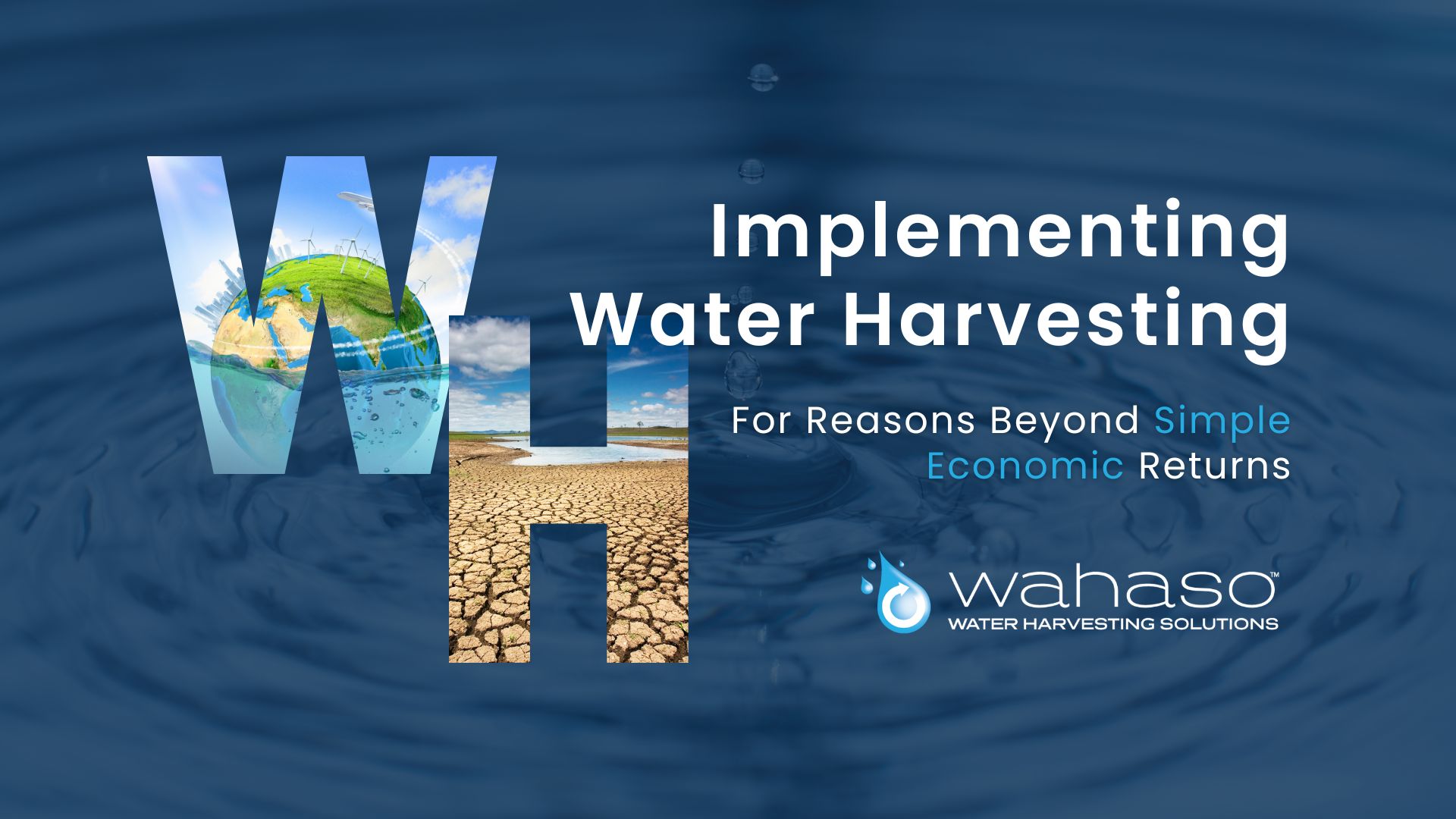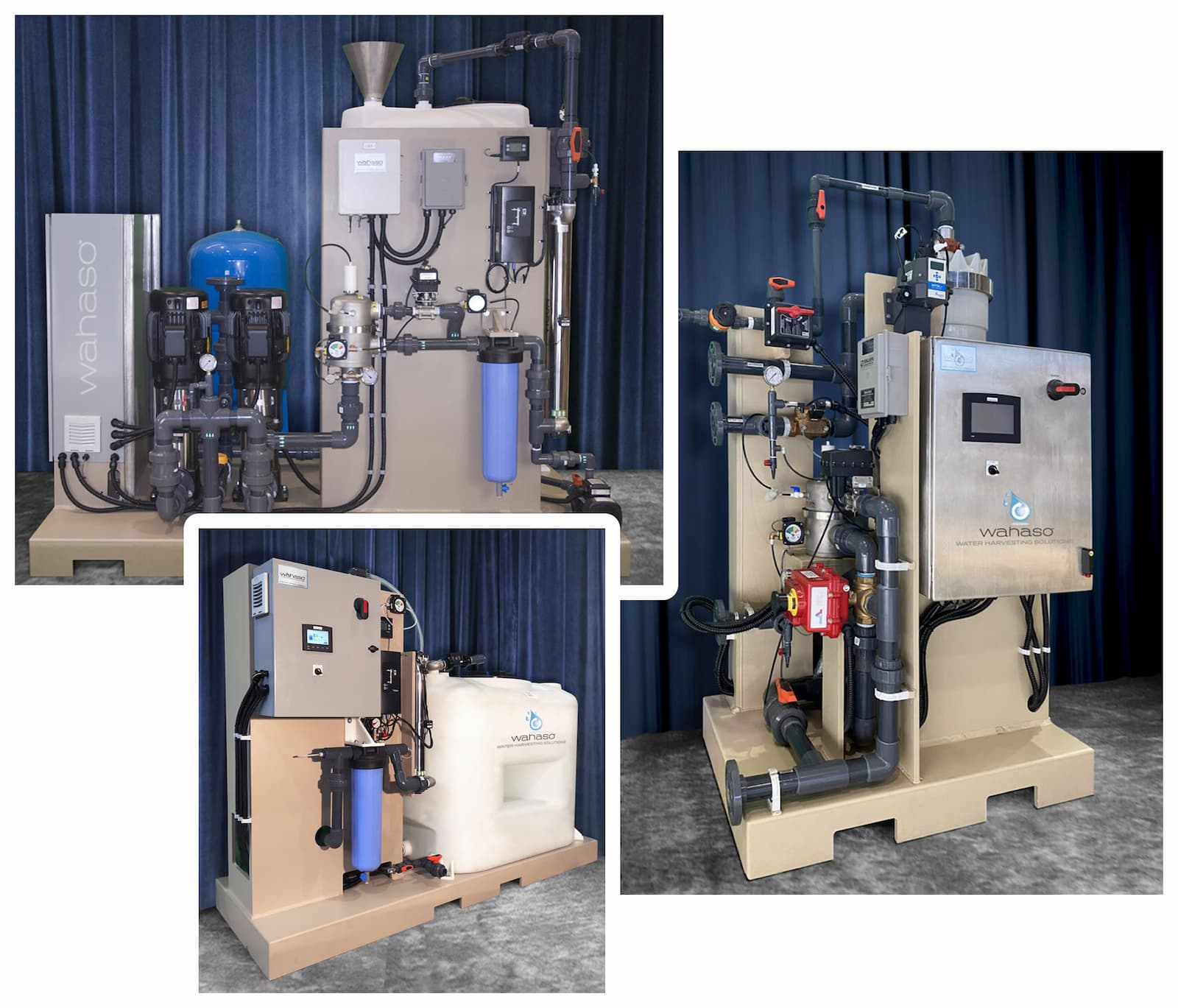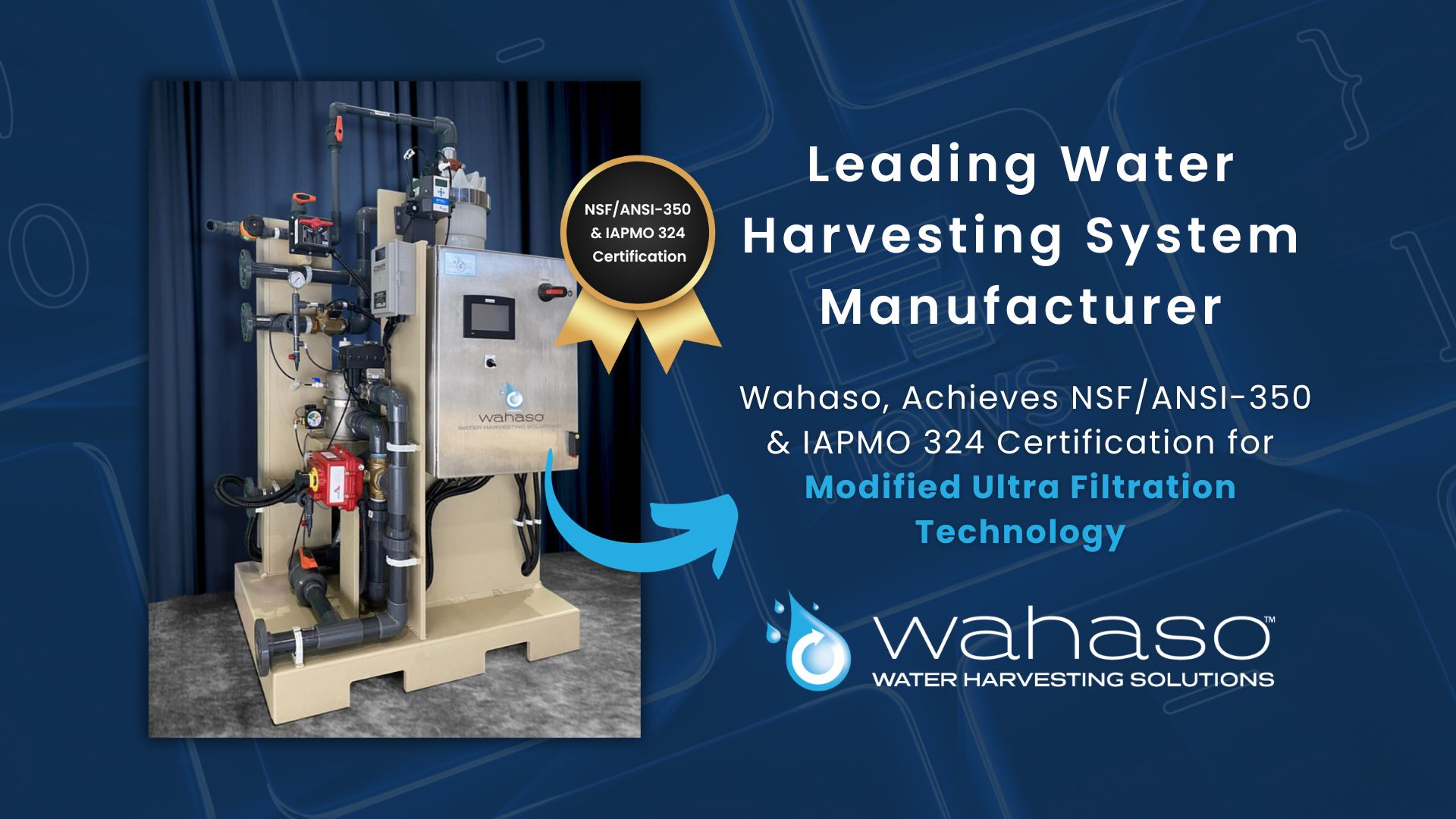Implementing Water Harvesting for Reasons Beyond Simple Economic Returns

Published: Sept. 2023 | by Wahaso Water Harvesting Solutions
While economic benefits often drive water harvesting integration, not all projects offer clients a short enough payback period, so other motivations, such as ESG, water conservation, and resilience goals are considered.
In addition, water harvesting may be the most effective method of addressing stormwater runoff restrictions, regardless of upfront costs. Grants and rebates are becoming more common in such cases, depending on the locality or state.
A thorough water quality analysis is crucial at the early design stage, to identify and quantify contaminants including total suspended solids (TSS), organic matter, heavy metals, pathogens, hydrocarbons, and chemical pollutants. The resulting data informs the design of the treatment chain engineers will implement to effectively filter and sterilize any contaminants present, prior to water is ultimately conveyed to end use.
A Holistic Approach to Determining Feasibility
A client’s decision to integrate water harvesting often begins with a discussion with the project design team, on the type and volume of water within a project, and consideration of how much water demand may be reduced by non-potable sources. The Scoping Process to follow, considers a building or site’s type, scale, usage, category, occupancy, and other factors, and whether the project will incur a substantial volume of annual water demand. Following a thorough software-driven analysis of project specific parameters, an accurate proposal can be presented to the client, which highlights overall system water efficiency in relation to estimated system cost.

Choosing the Right System Type
Although rainwater may be the most common water harvesting source that comes to mind, clients also consider capturing stormwater, greywater, condensate, groundwater, and even blackwater, for treatment and reuse. Deciding between a single source system and a hybrid one (multiple water source categories), is crucial to pursuing the most efficient solution, and plays a role in determining system cost.
Storage and Treatment Methodology
Choosing the type of water storage and treatment approach depends on essentially all project parameters and is a crucial final step in the system design process. Considerations include cistern material type (plastic, fiberglass or concrete), water capacity, and location (indoor, outdoor, above or below ground). These factors, in conjunction with implementing basic filtration vs ultra filtration, or utilizing chlorine vs UV sterilization, influence the ultimate system design, as well as the overall system cost. Because systems typically cost between $65,000 to over $750,000, it’s important that the manufacturer, design team, and client utilize accurate data and consider best practices.
Expanding Water Conservation Awareness
For buildings with water harvesting systems in use, a certain degree of education and training can benefit occupants or residents, helping instill widespread responsible water consumption. People can then actively participate in conservation efforts and potentially gain a sense of shared responsibility for the water harvesting system and accompanying Net Zero measures. Implementing water harvesting on projects when ROI may be longer, represents a broader commitment to conservation and overall environmental stewardship. While the major challenge of funding and financing water harvesting technology remains, there are positive signs of increased governmental funding, as well as increased public-private approaches to reduce upfront cost impacts.
View our Modified Ultra Filtration Technology Article
View post here

Wahaso offers state-of-the-art commercial rainwater and greywater harvesting systems. Which include all types of water harvesting systems, and water harvesting system design, specifically water harvesting systems for commercial buildings. Contact us for a Free Estimate.
Since 2004
Wahaso Mission
Our mission at Wahaso is to help municipalities and commercial property owners reduce the impact of their buildings on the environment through innovative and sustainable water practices.


